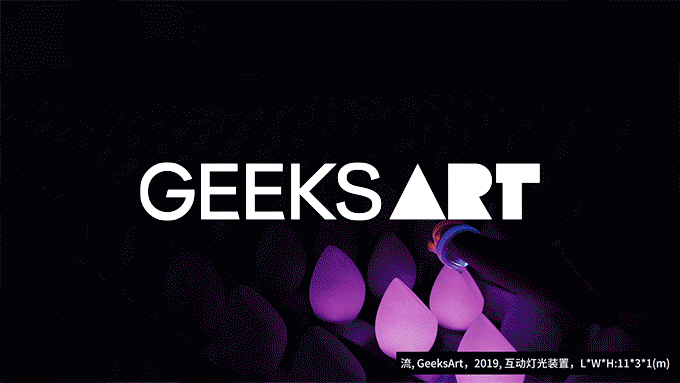“物”之于人的身体经验和情感记忆,在不同的时空切片中,能够启发新的可能性,创造更丰富的生活感知。Soong Lab+ 建筑设计事务所为「AtelierTing亭」设计的全新空间,即从思想、构建、互动的角度探讨了这个话题。在中国传统建筑中,“亭”是休息用的建筑物,轻巧灵活,多建在路旁或花园里供人纳凉。所谓“亭,停也,人所停集也。”在「AtelierTing亭」主理人心中,“亭”所承载的意向远大于形式,作为一个有关生活意趣的空间,它以开放、交流、分享的态度,吸引人们停驻于此,继而观照内心,为心有所住。
The pronunciation of ‘Ting’ in Chinese word stands for ‘pavilion’. The pavilion is a light and flexible structure used for rest in traditional Chinese architecture. They are usually built by the roadside or in gardens for people to enjoy the cool. The ancient text once said, ‘Pavilion brings time-out and gathers people also.’ But now, in the mind of the founder of 「AtelierTing」, the ‘pavilion’ carries far more intention than its form. As a space related to the interest of life, it attracts people to stop here with an open, communicative and sharing attitude, and then observe their heart and life through aesthetic, design, belief.
「AtelierTing亭」位于北京东五环附近的某创意产业园内,前身是北京市供销社下属的物流仓储基地。选址建筑曾是一处坐西向东,用于储煤简陋的砖混结构单层单跨式库房。原状外墙没有任何开窗,碎裂的水泥地露出大面积的条石基底,单层瓦楞板屋顶破旧失修,漏风漏雨。为了实现必要的功能分区,以及空间未来多元化应用的可能性,Soong Lab+ 建筑设计事务所对其进行了重构。建筑主体被延展为二层结构,一层包含中古家具展陈区、咖啡休息区、茶室;二层除展陈空间外,增设一间办公室。
「AtelierTing」 is located in a creative industry park near the East Fifth Ring Road in Beijing. It was formerly a logistics and warehousing base under the Beijing Supply and Marketing Cooperative. The building selected used to be a single-story and single-span warehouse with a simple brick-concrete structure, which sat west to east and was used for coal storage. The original exterior wall has no windows, the broken concrete floor exposes a large area of stone base, and the single-layer corrugated roof is dilapidated. To realize the necessary functional zoning and the possibility of diversified applications of the space in the future, Soong Lab+ reconstructed it. The main body of the building is extended into a two-story structure. The first floor contains a vintage furniture display area, a coffee area, and a tea room. In addition to the exhibition space, an office is added to the second floor.
建筑表达上,由于创意园早期开放改造,不同职业属性的业主给予了外立面不同表情,现在,Soong Lab+ 建筑设计事务所需要以一种具有逻辑的方式读取周边事物,在周遭“混乱”中,通过有序、有节奏的律动,为「AtelierTing亭」置入一个新的秩序。
Due to the early renovation of the creative industry park, a lot of the owners with different professions have given different styles to the architecture facade. Now, Soong Lab+ needs to understand the surrounding situation in a logical way first, put a new order for 「AtelierTing」 through the orderly and rhythmic way.
临街朝东的外立面上,9块方形大玻璃窗被分层规律的嵌入外墙,时光在硕大的方窗中穿梭转换,为室内引入充足的采光同时,也成为一种虚化介质,预示着“交流与往来”、“汲取与兼容”。而第10个“窗”,则是个凸出于外立面的不锈钢盒子,它具有极强的辨识度与先锋感,作为建筑的主入口,吸引着有趣的人和物在此聚合、碰撞。利用建筑与公共街道之间1.5米宽的区域,Soong Lab+ 建筑设计事务所通过轻质钢构,搭建出一处向外延续的可停留、休憩的平台,作为连接周边环境与事物的友好“过渡带”,为人提供安全感同时,还增加了邻里互动的可能。
On the east-facing facade, 9 large square glass windows are regularly embedded in the exterior wall. Time flows through the windows, bringing insufficient daylight to the interior. At the same time, they become a kind of metaphorical element that indicating ‘communication and exchange’, ‘absorption and compatibility’. The 10th ‘window’ is a stainless steel box protruding from the facade. As the main entrance of the building, it is highly recognizable and avant-garde, attracts interesting people and objects to gather here.
建筑外墙以灰色真石漆做底,混合掺入粒径2-3毫米的石子作为骨料均匀涂抹,有关“肌理”的材料实验使整个外观看上去整洁沉静却不乏味。部分红砖墙被作为“原始素材”保留下来,搭配白漆涂刷的标识,有温度的回应了以往的“仓库印象”。由此,自然肌理、玻璃、砖石、钢板之间的质感对比,形成了一种非常特殊的现场氛围。
For the exterior wall of the building, Soong Lab+ creates a material experiment on the ‘texture’ by using grey lacquer as the bottom, and mixing the stones with the particle size of 2-3 mm. This texture makes the whole appearance look clean and quiet but not boring. The Part of the red brick wall is retained, and the logo with white paint is a response to the previous “warehouse impression”. Thus, the contrast between the natural texture, glass, brick and steel plate forms a very special atmosphere.
20世纪初期-中期生产的现代家具,如今漂洋过海来到「AtelierTing亭」,这种有意思的回流被定格于方窗内。发现、探索、转译、共生,有关家具设计与生活文化的脉络被重新梳理,借由来自丹麦、德国、荷兰、比利时、意大利等地的中古家具生动呈现。特定时代的美学与工业缩影,经历岁月的洗礼后,依旧闪光。在Soong Lab+ 建筑设计事务所看来,如何最大化诠释这些“物”的内质与价值,有序的展现不同风格、不同背景的产品,是展陈空间设计考量的核心。
Modern furniture produced from the early-mid stage of the 20th century has now traveled across the ocean to「AtelierTing」. This interesting phenomenon is fixed inside its large windows. Discovery, exploration, translation, symbiosis, the context of furniture design and living culture has been reorganized again in China, and vividly presented with vintage works from Denmark, Germany, Netherlands, Belgium, Italy, etc. The aesthetic and industrial epitome in a specific era, after years of baptism, still shines. In the view of Soong Lab+, how to maximize the internal quality and value of these works and orderly display them of different styles and backgrounds are the core considerations of the interior design.
展陈空间在白色基底的烘托下,被有序划分成不同情境。咖啡休息区、茶室的设置,则支持空间多元使用的需求。在没有形式感的空间内,吧台处跳脱的水磨石隔墙,茶室的弧形门,通过柔和的曲线元素,回应着人的心理舒适度。
The interior space is orderly divided into different scenes under the white background. The setting of the coffee area and tea room supports the demand for multiple uses of space. Through the soft curve elements, the terrazzo partition wall and the curved door of the bar and tea room finally respond to the psychological comfort of people.
入口处以20世纪50年代的实木写字桌、边柜、餐桌椅,打造出一组“木色情景”的欢迎感,沉稳朴实,与东方人的传统审美更为接近,亲和;相邻区域中曾被Marcel Lajos Breuer定义为“无风格”的钢管、金属系列家具,开启了一个属于包豪斯时代的篇章;豁然开朗的挑空中庭,被中国新锐设计Mario Tsai的灯光装置点亮,下方的红色Alky座椅、Oval大理石咖啡桌,以灵动诙谐的混搭呈现出更具未来感的特质;后方展架区则如同一次回顾,将不同时期的经典作品,收纳于一座线性构成的“亭”中;藏于“亭”背后的楼梯,引导人步入二层去感受更丰富的展品,体验与一层完全不同的空间状态。
The solid wood writing desk, side cabinet and chairs of the 1950s at the entrance, create a welcome feeling by a wooden color scene that is more close to the traditional Oriental aesthetic. In the adjacent area, the steel tube and metal furniture series, once defined by Marcel Lajos Breuer as “no style”, open a chapter belonging to the Bauhaus era. The atrium presents a more futuristic feature with a mix of lighting installation by Chinese designer Mario Tsai, a red Alky chair and an Oval marble coffee table in the 1970s. The rear area is like a review of the classic works of different periods stored in a linear ‘pavilion’. And the stair hidden behind the ‘pavilion’ leads people into the second floor to find more surprises.
对于Soong Lab+ 建筑设计事务所而言,「AtelierTing亭」的属性,有着看似无规律的不确定性,以及无界的可能,而在深层的探索与糅合中,它仍需要一种“平衡”——来自时间、空间、人与物的平衡。这次改造,最终以“场域精神”作为平衡的虚拟载体,实现了空间、功能、质感、情绪的统一,并在更久的时间里,通过新的变量产生未知效果的再融合。
For Soong Lab+, the attributes of「AtelierTing」are irregular and limitless. It still needs a kind of balance, between time, space, people, and objects in the deep exploration and mashup. Soong Lab+ takes the ‘spirit’ as the virtual carrier to achieve the unity of space, function, texture, and emotion, and believes that in a longer period, the reintegration of the unknown effects will appear through new variables.
▲概念分析图
▲图纸
项目信息——
项目位置:北京半截塔路55号七棵树创意园C10-5
项目业主:「AtelierTing亭」
项目类型:建筑/室内改造
设计单位:Soong Lab+ 建筑设计事务所
主持设计:王松涛
设计团队:张健,王晓雨,余思成,常梦雅,李帅,刘坤
摄影版权:金伟琦、肖石明
建筑面积:400 m²
设计周期:2021.2.20-2021.3.10
施工周期:2021.3.15-2021.5.28
空间主材:水磨石、不锈钢、钢板、涂料
Project Information——
Project Location:C10-5, Qikeshu Creative Park, 55 Banjieta Road, Beijing, China
Client:AtelierTing
Type:Renovation
Design:Soong Lab+
Director:Songtao Wang
Design Team:Jane Zhang, Xiaoyu Wang, Sicheng Yu, Mengya Chang, Shuai Li, Kun Liu
Photo Credits:Weiqi Jin, Shiming Xiao
Building Area:400 m²
Design Period:2021.2.20-2021.3.10
Construction Period:2021.3.15-2021.5.28
Materials:Terrazzo, Steel plate, Stainless steel, Coating




































